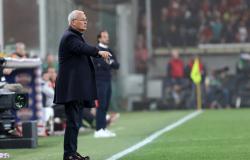We’ve all been there since childhood but we don’t really know its history, like its “original” name. It is linked to the birth of this splendid street in the city
«Road of Porta di Maqueda – This suburban road was opened by Antonio La Grua, marquis of Regalmici, praetor, from 5 November 1778, and runs from the gate of Maqueda to the factories of the firriato of Villafranca”. This is what the Marquis of Villabianca wrote in his diaries regarding the continuation of the “Strada Nova”, i.e. the Via Maqueda which, after passing the gate, continued its journey towards the plain of the Hills.
This road is known to us today in the first section as via Ruggero Settimo and in the second as via della Libertà. In the notes to the text of Villabianca, Gioacchino Di Marzo also writes that «Firriatu is commonly referred to in Sicilian as a farm surrounded by walls, as was the one just mentioned of the princes of Villafranca, of the Alliata house, now held by various owners, and divided in the middle by the very pleasant course of Via della Libertà, begun there in 1848, and then completed with a large English garden, which at the end extends there for public delight”.
Adv
There Freedom Street takes its name after the anti-Bourbon riots of 1848: «In fact, after the revolution, on 16 March 1848, three months after the establishment of the provisional revolutionary government, presided over by Ruggero Settimo, the IV Committee of the Interior-Education Public and Commerce, decided on the construction of a large suburban road” connecting the southern countryside of the city with the northern one.
Compared to the construction of the Via Maqueda which settled on an ancient urban fabric, the Via della Libertà operated on country land, with the presence of sparse buildings, but for it to be built the Palermo Senate «proceeded with the expropriation of the lands of the “firriato of Villafranca”, now belonging to Ernesto Wilding, prince of Radaly and Butera, furthermore the Senate had to find a compromise with the Deputies of the Conservatory of the Crosses, as the road cut the religious building in the middle.
Of this, on the sides of the road, today we can observe on the eastern side the façade of the Institute of Crosses in “neo-Arab” or medieval style with characteristic pointed mullioned windows and on the western side the Hotel Excelsior.
Once an agreement was reached, the work continued. The road split in three lanes, two rows of plane trees were planted on the sides of the main roadway and three hundred hibiscus on the smaller roadways, in addition to the installation of various stone seats as was in use along the promenades built in the eighteenth century. The Way of Freedom also represented modernity and worldliness.
The new road will replace the ancient promenade to the marina and will be a meeting place for the high aristocracy, especially after the planting of a wonderful “garden of delights” as a backdrop at the end of the street. As we know, the Bourbon restoration followed the uprisings of ’48 and the Via della Libertà was temporarily called “Road of the Royal Favourite” as it led to the royal park created at the end of the 18th century by Ferdinand IV of Bourbon.
The project of the street envisaged its end almost where the English Garden is today (dedicated to Piersanti Mattarella) but it was entrusted to a very young Giovan Battista Basile (father of the more famous Ernesto) who conceived the extension of the street which would have cut it into two parts the garden continued without interruption up to the Colli plain. For this occasion the Palermo Senate purchased other land north of the Croci prison and it will be there that the “modern” garden will be created, created on impervious terrain due to the presence of an ancient tuff quarry.
«The culture of the landscaped and informal garden, as an example of a natural garden and in antithesis to the formal and built aspect of the Renaissance garden, was born in England at the beginning of the 18th century and had spread throughout Europe thanks to artists, landscape designers and writers”.
The construction of the English Garden was an introduction to the avant-garde landscaping of the time for the city of Palermo, in fact GB Basile did not think of inserting avenues according to a precise geometric compositionas happened in the 18th century in Italy, but with apparent ease he designed meaningless routes following which one arrived at magnificent lakes or temples located on portions of land that were sometimes flat, sometimes valleys or hills, adorned with buildings according to the taste of ancient Sicilian art Arab-Norman or Siculo-Norman.
The garden was cut into two parts by the Strada della Libertà: to the west the parterre was created (today dedicated to the judges Falcone and Morvillo) with a small grove, to the east a true garden of delights designed in the same way as the Arab “genoard” or “viridarium” ” Normans.
«Free avenues and sinuous paths wound between the seven hills (magic number of oriental culture) and ravines, partly existing and partly specially created by rotating around the large central lake in front of the Saracen Castle, the neo-Norman style pavilion obtained from the transformation of an existing house.
The parterre (garden on the western side) was designed with a layout regular and symmetrical: it adapted to the irregularity of the land with flowerbeds that described a semicircle around the fountain, according to a design taken from the Roman Villa Borghese. […] More than 27,000 specimens including trees, bulbs, tubers, herbs and shrubs were purchased for the English Garden. […] The works were completed in 1852.”
Forty years later, on the occasion of the 1891-92 Expo, the English garden changed its original appearance: the central fountain in the parterre was replaced with the current equestrian statue of Garibaldi created by Ragusa and which I spoke about in a past article, in 1895 some kiosks were added and in 1926 a pavilion relating to the “P. Wedeking” kindergarten was established, also the subject of a past article.
At the end of the 19th century the garden was adorned with dthe various statues and monuments of great Sicilian artists, while in the years before and after the Second World War the nineteenth-century gate in Basile style was replaced with the current one.
Today the garden is certainly a destination for many Palermitans who bring their children or grandchildren there to breathe some clean air, I personally remember it for some substantial reasons: as a child I ran after a ball inside it or on a bicycle and enjoyed the merry-go-rounds, as a teenager I took refuge in them together with my classmates when we decided not to go to school, as I grew up I took part in some political demonstrations.
The future of the garden? It’s a mystery to everyone, but in the meantime, enjoy it.
(For further information compare Via Libertà yesterday and today by Adriana Chirco and Mario Diliberto; The Parish of Santa Maria di Monserrato and the Institute of Crosses in the villa of the Duke of Bivona by Matilde Costantino)
Tags: ancient Garden Delights Palermo





